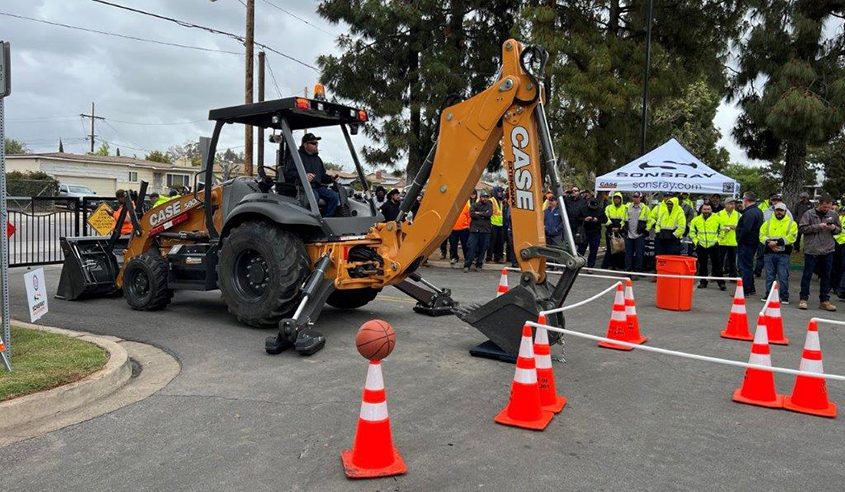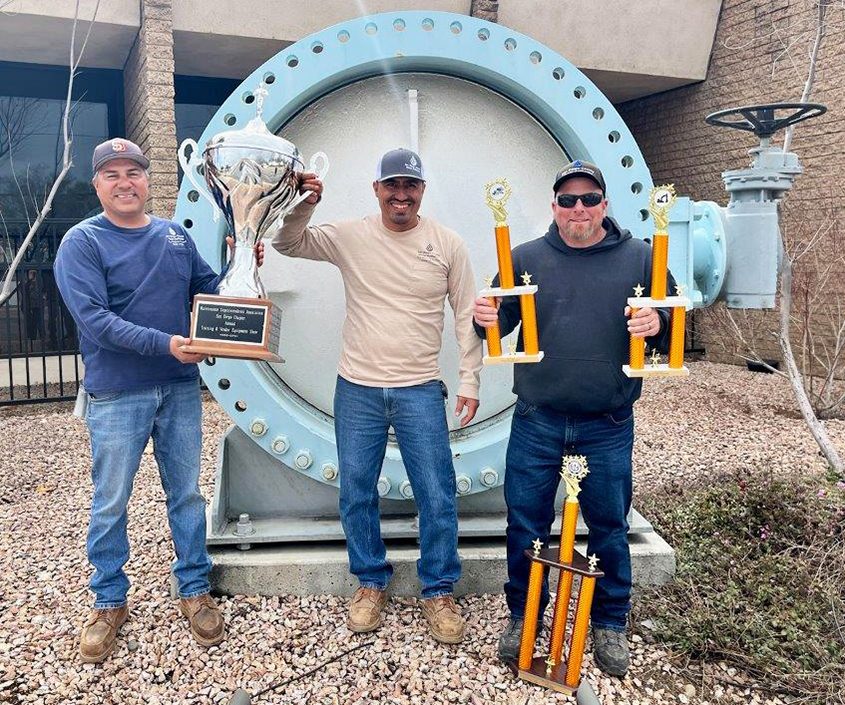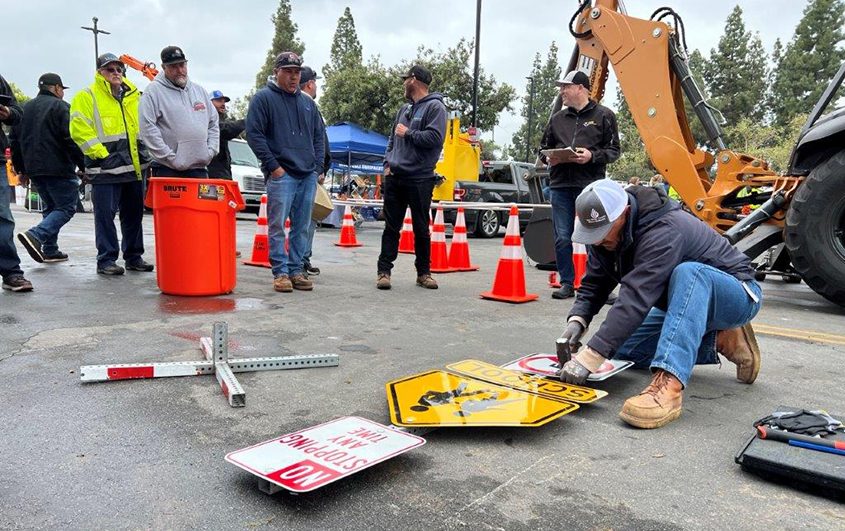The San Diego County Water Authority’s Operations and Maintenance Division team won the top prize at the annual ROADEO Skills Competition. The 2023 event was hosted by the San Diego Chapter of the Maintenance Superintendents Association and the American Public Works Association (APWA) in April at Wells Park in El Cajon.
The annual contest gives the region’s public works maintenance professionals an opportunity to put their daily job skills on the line against the best of their peers, both in individual events and in three-person teams.

Bobby Bonds won the backhoe skills event at the 2023 Roadeo Competition. Photo: San Diego County Water Authority
Teams compete for the 2023 MSA Trophy in four events: backhoe skills, mini-excavator skills, sign assembly, and a wheelbarrow obstacle endurance race. These are the same skills used by public works employees daily. The team having the best overall combined time wins the MSA perpetual trophy, along with serious bragging rights.
Testing skills and experience

The team of Tony Zepeda, Frank Vargas, and Bobby Bond pose with their awards at the Water Authority’s Escondido facility. Photo: San Diego County Water Authority
Water Authority Director of Operations and Maintenance Eva Plajzer introduced the winning team members at the Water Authority Board of Director’s Engineering and Operations Committee meeting on April 27. Senior Maintenance Technician Bobby Bond, Maintenance Worker II Frank Vargas, and Maintenance Technician Tony Zepeda competed for the Water Authority. System Maintenance Supervisor Luke Holbrook and Operations and Maintenance Manager Al Garza supported the team’s preparation and efforts.
As the overall winning team, the Water Authority trio wins a MSA Trophy for display which, Plajzer joked, “is larger than the National Hockey League’s Stanley Cup.”

ROADEO team member Bobby Bond poses with the impressive winners’ trophy. Photo: San Diego County Water Authority
Bond, who also won first place in the backhoe competition, explained to board members all the events represent similar skills competitors perform in their jobs performing critical water and wastewater systems maintenance and repairs.
For the backhoe skills test, the operator must use the backhoe to pick up a basketball off a cone, or a ring on a chain, then run through an obstacle course against the clock to successfully place the basketball inside a barrel. The skills needed to pick up small items are the same skills preventing workers from breaking pipes or fixtures.
“They come through every time”
Valley Center Municipal Water District General Manager Gary Arant, who represents his agency on the Water Authority Board, noted the serious purpose of the competition.
“It reflects the skills that we have within the organization,” said Arant during the committee meeting. “Those skills come with years of service and perfecting what they do, training the newer people. We as member agencies benefit, because when we have a shutdown, and we’re waiting for that system to come back up, we count on those skills. They come through every time.”
Friendly competition with serious purpose

Frank Vargas tests his skills in the sign assembly competition. Photo: San Diego County Water Authority
While participants enjoy the event and the friendly contest among colleagues, the competition categories test the same skills the participants use on the job while maintaining water and wastewater systems, streets, and other vital infrastructure residents and businesses alike rely on every day.
Bonds is a previous winner of multiple individual categories since 2017 and the 2018 Master Operator winner. Zepeda is also a previous winner in the Wheelbarrow Skills Competition. Vargas was a first-time competitor.
Winners in the equipment competitions will compete at the August 2023 National APWA ROADEO in San Diego.

(Editor’s note: The Valley Center Municipal Water District is one of the San Diego County Water Authority’s 24 member agencies that deliver water across the San Diego County region.)








